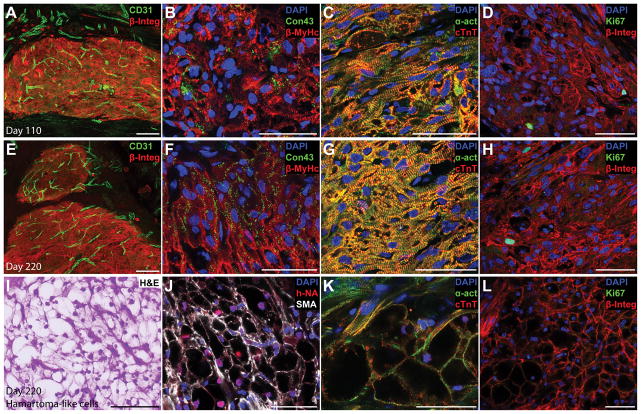Figure 5. Long-term grafts showed high blood vessel density, progressive cardiomyocyte alignment and connexin 43 expression.
(A,E) A high blood vessel density (CD31, maximum intensity projection of a 30 μm section) was found in human grafts (human beta 1 integrin, β-Integ) at 110 and 220 days after implantation. (B,F) Connexin (connexion 43, Con43) expression could be detected in 110 day old grafts (B), but grafts which were implanted for 220 days showed a more mature expression pattern with connexin localised at cell interfaces (F). Sarcomere alignment also increased with time in human CMs (beta myosin heavy chain, β-MyHc). (C–D) Long-term engraftment led to better sarcomere alignment and more mature sarcomeres (alpha sarcomeric actinin, α-act; cardiac troponin T, cTnT) spanning the entire width of CMs. (D,H) Only a small number of human cells showed signs of an active cell cycle (Ki67) after 110 or 220 days of engraftment. (I) Interestingly, the 220-day-old grafts contained small foci where CMs showed a glycogen-rich, hamartoma-like phenotype (H&E). (J,K) These hamartoma-like cells were of human origin (human nuclear antigen, hNA) and stained positive for smooth muscle actin (SMA) as well as cardiac markers (α-act, cTnT), with some showing organised sarcomeres. (L) None of the hamartoma-like cardiomyocytes was in an active state of the cell cycle (Ki67, negative). Scale bars A,E,I: 100 μm; B–D, F–H, J–L: 50 μm.

